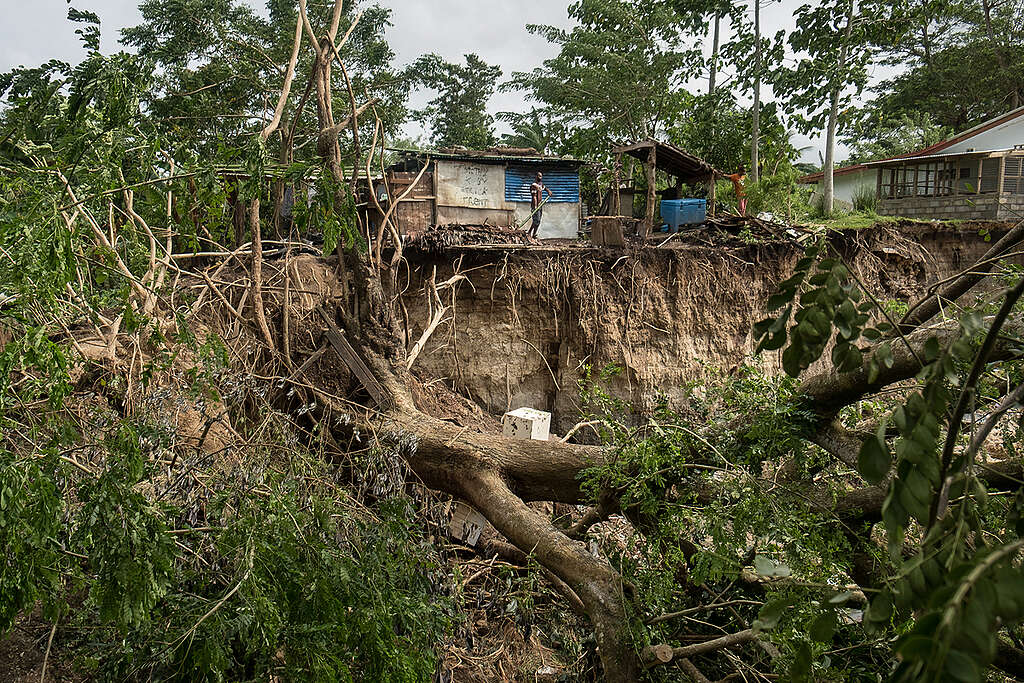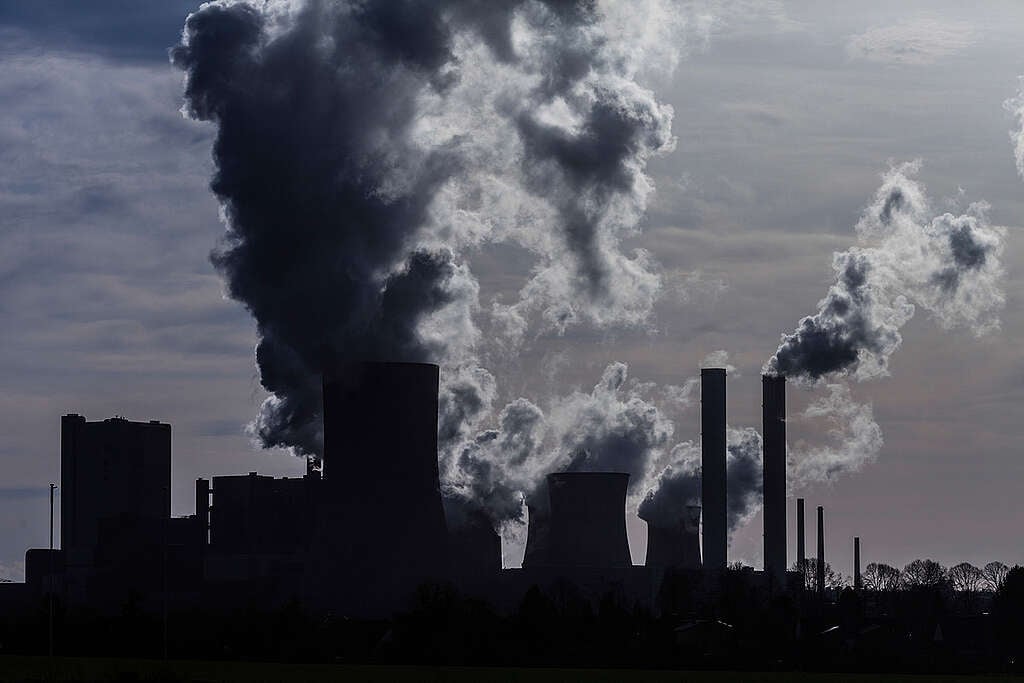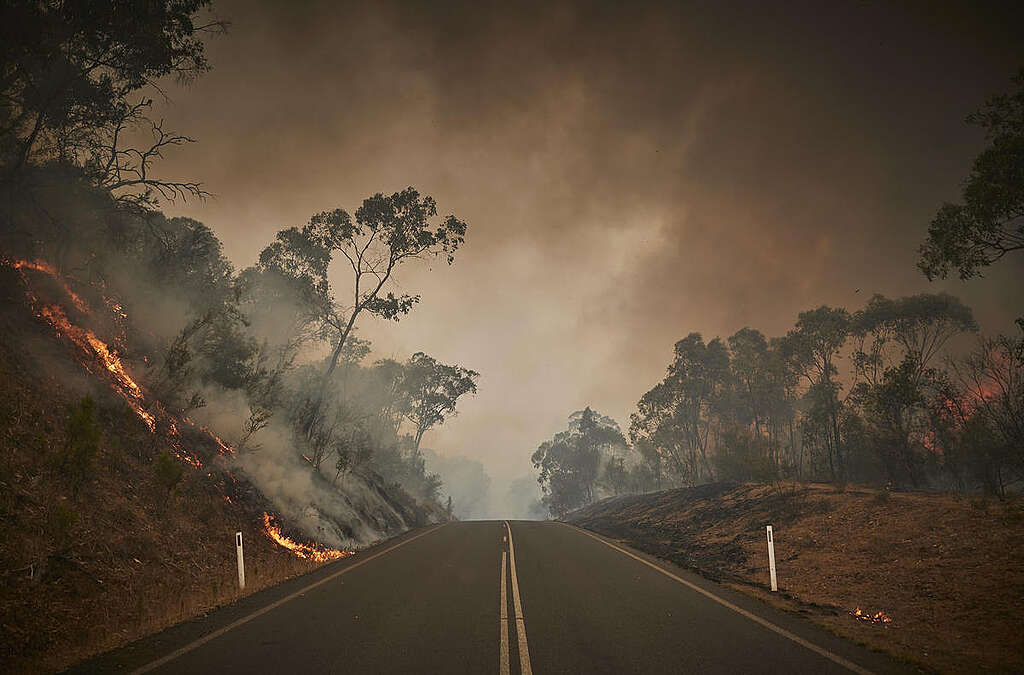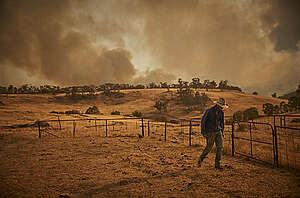Climate Impacts
Climate change – caused by the burning of fossil fuel – is creating huge changes to our planet. As global average temperatures rise, so too do the changes we see in our environment and weather patterns.


Sign the petition to demand the Australian Government stop new coal, oil and gas projects now.
Sign petition
The problem
The impacts of climate change on humans, our societies, wildlife and our environment are wide – and differ greatly across the globe. Health implications, infrastructure, food and water – almost everything humans need for survival is at risk if average global temperatures continue to rise.
Extreme weather
With every 1°C of warming, our atmosphere can hold around 7% more moisture (NASA). This can create more intense rainfall in areas already susceptible to rain. Higher sea levels and more intense rain patterns will create more intense flooding in areas susceptible to flood. Increased moisture in the atmosphere and warmer oceans can also create more intense storms, cyclones, hurricanes, typhoons and rainfall all around the globe.
We’ll see more food instability as crops are whipped out more regularly. In Australia we’re already seeing more regular product shortages due to extreme weather events and flooding in places like Queensland. With globalised food supply chains there will be more and more global shortages of food when key growing regions are hit with more extreme weather events. With increased extreme weather events also comes risks to infrastructure. Over recent years we have seen huge damage bills due to extreme weather events and floods. Insurance will likely become harder to get for residents in flood zones as risks increase.
Extreme heat

Increases to average temperatures and changes to humidity levels are becoming life threatening in some areas of the world. In Australia there are a number of regions – including Darwin, Broome and Port Hedland – that are expected to become unlivable in the coming decades due to extreme heat. Humans rely on the process of sweating to cool our bodies in hot weather. When humidity and heat levels are high, we cannot do this effectively. When our body cannot cool down for a number of days in a row, the situation can become deadly.
Increased temperatures for longer periods of the year worsens drought conditions and fires in dry areas and creates additional rainfall in humid climates. Both can wreak havoc on food and water supplies for humans and wildlife alike.
Ocean changes
The ocean is one of the main homes of the world’s biodiversity – without which most of life on earth would not be possible. Our oceans are also the lungs of the earth, absorbing huge amounts of carbon dioxide as marine plants, algae and phytoplankton draw in the CO2 using photosynthesis.
Our oceans are both highly important to maintaining a healthy climate and susceptible as global temperatures increase. Higher ocean temperatures can cause coral bleaching, displacement of food for marine animals and put the whole ecosystem at risk. Not only does a less productive ocean ecosystem affect the food supply for billions around the world, but also makes the oceans less capable of removing CO2 from the atmosphere.
In Australia we’re seeing increased coral bleaching and ocean acidification, most famously at the Great Barrier Reef. These events can greatly affect the wildlife in our oceans, causing changes to biodiversity and putting our ocean systems at risk of collapse.
Melting ice
10% of Earth’s landmass is currently covered in ice. The majority of these glaciers can be found in Antarctica and a smaller amount at the Greenland ice caps. Rapid glacial melt is occurring in both regions, causing huge amounts of ice cold water to enter waterways and oceans. As large amounts of cold water enter the ocean, it can cause currents to slow down and sea levels rise. Sea levels are expected to rise up to 55cm for 1.5°C warming and 1m for 4°C warming by 2100 (IPCC).
As currents and sea levels continue to change, humans and wildlife will face challenges like disrupted weather patterns, flooding, more intense storms and coastal erosion. The knock on effects of these changes are widespread. Floods and storms can damage infrastructure, but also cause runoff to enter waterways – affect wildlife, food sources and water supply.
In Australia and the Pacific there are thousands of low lying islands at great risk from sea level rise. Higher tides, coupled with more rainfall and extreme weather can create significant erosion and flooding – risking these islands’ livability and wildlife. Major cities all around Australia are at risk of major flooding events as sea levels, rain and weather becomes more extreme across the country. Even if homes and infrastructure don’t go under water, flooding can affect underground water tables and overwhelm sewage and storm water systems that risk damaging buildings and waterways.
Help end the age of fossil fuels
Right now, Greenpeace is working to take on the biggest polluters and stop new coal, oil and gas projects in Australia. We’re holding corporations and governments to account, taking direct action and investigating and exposing them.
We still have time. What happens next is in our hands.
Keep informed
Together we are part of a growing, global movement determined to bring about the changes our planet desperately needs. Sign up to receive updates on our campaigns.
